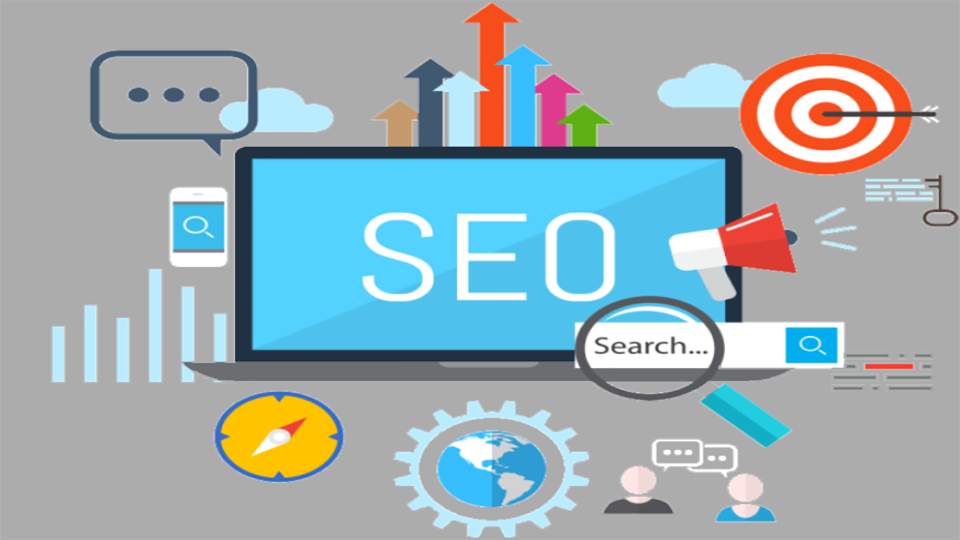
How a simple website turns your visitors into customers ? A masterful digital persuasion journey
In today's digital world, it's not enough for your business to simply have a beautiful website. The true goal of a professional website isn't to impress visitors with its appearance, but rather to lead them on a compelling journey that ultimately converts them into actual customers.
Many people think that a complex design or heavy features is what makes a sale, but the truth is that thoughtful simplicity is the key: a simple, clear website, designed around the customer's needs, can achieve impressive results.
In this article, we reveal how a simple website can successfully convince a visitor and convert them into a customer, step by step.
1- Clarity First: Instant message that answers “What do you offer?”
A new visitor doesn't have time to figure out what you're selling on their own. In just a few seconds, they should understand:
-What do you offer?
-What is the benefit to him?
-Why does he trust you?
How do you achieve this?
– Use a clear headline that directly describes your service or product.
– Add a short, engaging description that explains your added value.
– Avoid vague terms or flowery sentences that do not provide real information.
2- A clear call to action (CTA) everywhere it matters.
A simple website doesn't leave the visitor wondering, "What next?"
– Use clear call-to-action buttons such as “Book Now,” “Request a Quote,” and “Contact Us.”
– Make sure your call to action is visually prominent and placed in strategic places (top of the page, bottom of the page, center of the content).
Objective: To make decision making easy and immediate.
3- Easy-to-navigate design: Don’t make the visitor think too much.
Simple design means:
– Clear and easy to understand structure.
– Short and organized lists.
– Logical navigation paths.
Why?
Every second a visitor spends trying to figure out where to go is a missed opportunity to convince them.
Make the visitor's journey smooth, as if you are accompanying them step by step until they reach the decision-making point.
4- Demonstrate trust and credibility
A new visitor needs evidence that you are the right choice.
Even very simple sites can build strong trust by:
– Testimonials from previous clients.
– Logos of prominent partners or clients.
– Clear guarantees or flexible return policies.
– Clear and correct contact information.
– Security certificates (such as HTTPS).
5- Focus on speed and performance
Nothing kills sales like a slow website.
- Click on the images.
– Remove unnecessary codes and scripts.
– Choose reliable hosting.
The visitor waits only a few seconds, and if he is late, he may leave without returning.
6- Targeted content that solves a real problem
A simple, effective website doesn't fill pages with words, but rather answers the visitor's question:
"How will you solve my problem?"
Write in a friendly manner, based on the client's needs, and in simple, understandable language.
7- Responsive design for all devices
Today's visitor browses from a phone, tablet, or computer.
– Responsive design ensures a perfect experience in all cases.
– A website that is difficult to use on a phone means a lost customer.
Conclusion: Strategic Simplicity is the Secret to Conversion
Minimalist design is not “poor” or “primitive” design, but rather intelligent design that removes any confusion or obstacle between the visitor and the end goal.
Each element on the site should answer a question:
How does it bring the visitor closer to making a decision?
When you adopt this mindset, your website transforms from a mere business card into a smart marketing machine that works 24/7 to bring in customers.
If you plan to create a website that will get real results, think about targeted simplicity and focus on the visitor's needs first and foremost.
Other articles

The Most Common Web Design Mistakes and How to Avoid Them: Reflections on a Digital Experience
In a world where websites have become the primary gateway to communication and the first impression of any organization or idea, we might think that

How important is user experience (UX) to the success of websites ?s
The success of any digital project has always been linked to the quality of the idea or the brilliance of the design. However, experience has proven that the most important and perhaps

How does site speed help improve your search engine visibility and increase sales ?s
In a digital world where things move in seconds, website speed is no longer a technical luxury. It has become one of the most important factors for digital success. From the first moment a user

A Comprehensive Guide: How to Choose a Professional Web Design Company for Your Project
At a time when websites are no longer an optional extra, but rather a necessity for every project or brand, the need to choose the right partner to design this vital digital interface becomes clear

Why is responsive design a must in 2025 ?s
In 2025, website design is no longer just a matter of form or visual taste. It has become a strategic necessity, upon which the success of a digital project is built from the ground up

WordPress, Webflow, and Shopify: Which platform best suits your project needs ?s
In the era of digital transformation, online platforms specializing in website design and management have become an indispensable necessity. Among the dozens

Search Engine Optimization (SEO): Between Content and Technology, How to Strike a Balance ?s
In the crowded world of the Internet, it is not enough to have a stylish website or good content; your site must be visible, appear in search

Top 5 Common Mistakes New Website Owners Make and How to Avoid Them
At the start of any digital project, website design is a pivotal step. But in the rush and excitement, many new website owners make seemingly simple mistakes
